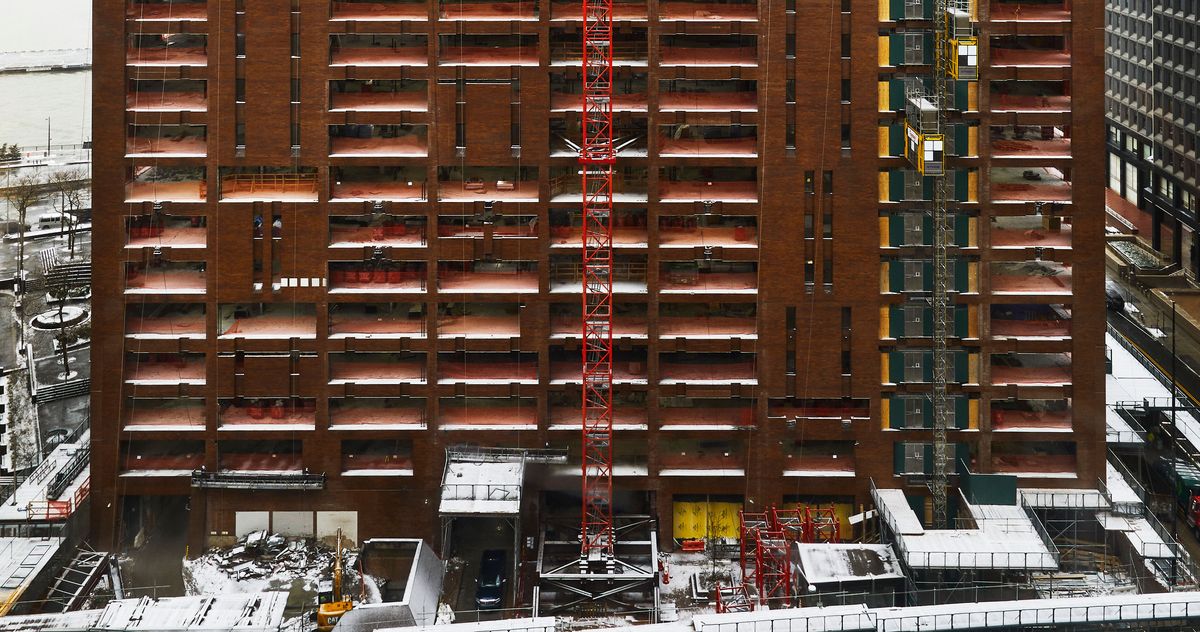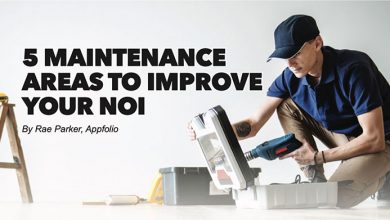Flooded Apartment? Here’s What to Do

Dealing with a flooded apartment can be overwhelming and stressful. Whether caused by heavy rains, a burst pipe, or an overflowing appliance, swift action is critical to minimize damage and ensure your safety. Whether you’re dealing with flooding in an apartment in Dallas, TX, or a rental in Miami, FL, this ApartmentGuide article provides a detailed, step-by-step guide on what to do if your apartment floods.
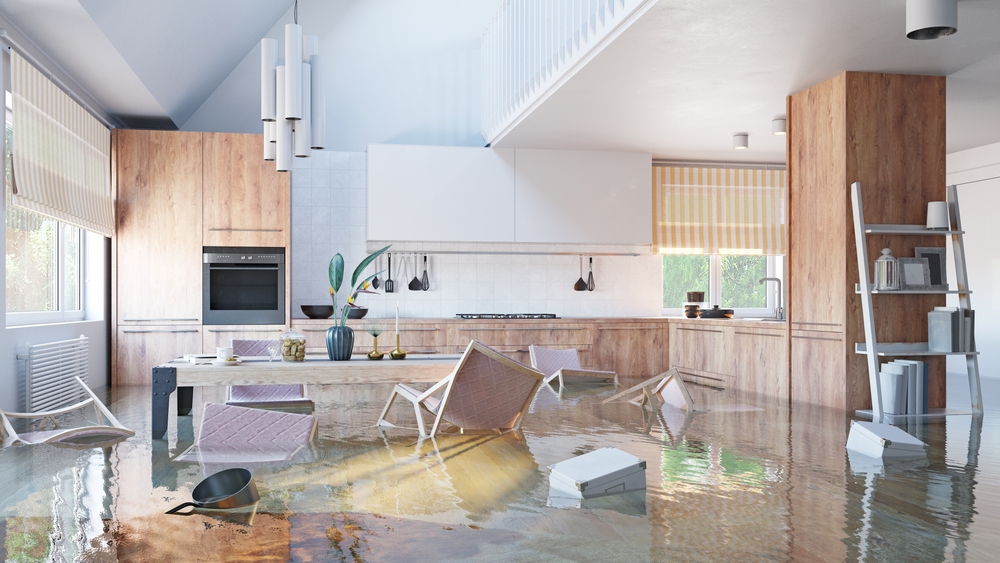
1. First, ensure your safety
Before addressing the flooding, prioritize your safety:
- Turn off the electricity: If water levels are rising and you can safely reach your circuit breaker, turn off the electricity to avoid the risk of electrocution. If water is near electrical outlets or cords, leave the area immediately and do not attempt to access the breaker.
- Avoid standing water: Standing water can hide hazards like sharp objects, broken glass, or contaminants. Additionally, water from flooding may be contaminated with sewage or chemicals.
- Watch for gas leaks: If you smell gas or hear hissing, evacuate immediately and call your gas company or emergency services from a safe location.
- Evacuate if necessary: If the flooding becomes severe, leave your apartment as soon as it is safe to do so. Avoid walking through deep or fast-moving water, and use stairs instead of elevators. If possible, bring essential items like your phone, ID, and a small bag with necessities. Once outside, move to higher ground or a dry, safe location away from floodwaters.
2. Stop the source of water
If it’s safe to do so, identify and stop the source of the water:
- For a burst pipe, locate and shut off the main water valve. This is typically found under the sink, near the water heater, or in a utility closet.
- If an overflowing appliance is the cause, unplug it and shut off its water supply.
- For external flooding, such as heavy rain or sewer backups, use sandbags or temporary flood barriers to limit water flow into your apartment.
How to shut off specific water sources:
- Toilets: Locate and turn off the valve on the wall behind the toilet.
- Washing machines: Turn off the valve behind the appliance.
- Water heaters: Turn off the main valve leading to the water heater.
3. Document the damage
Take photos and videos of the flooding and any damaged items for insurance and landlord documentation purposes. Be thorough and include:
- Affected areas of the apartment
- Damaged furniture, appliances, and personal belongings
- Walls, floors, and ceilings showing signs of water damage
Ensure photos include timestamps (many smartphones do this automatically). Include close-ups of damaged items alongside wide-angle shots of the affected area to provide context. Write a brief summary of events, such as when you first noticed the flooding and any immediate actions you took (e.g., shutting off the water or calling your landlord).
4. Notify your landlord or property manager
Contact your landlord or property manager immediately. Provide a detailed account of the flooding, including:
- The time the flooding started
- The source of the water (if known)
- The extent of the damage
Your landlord is generally responsible for structural repairs, including fixing pipes and addressing leaks. However, it’s important to review your lease agreement to fully understand the division of responsibilities. To ensure clear communication, request written confirmation detailing the steps your landlord plans to take, such as scheduling necessary repairs or arranging for professional cleaning services.
Wondering what qualifies as urgent? Check out our guide on Emergency Apartment Maintenance for essential tips.
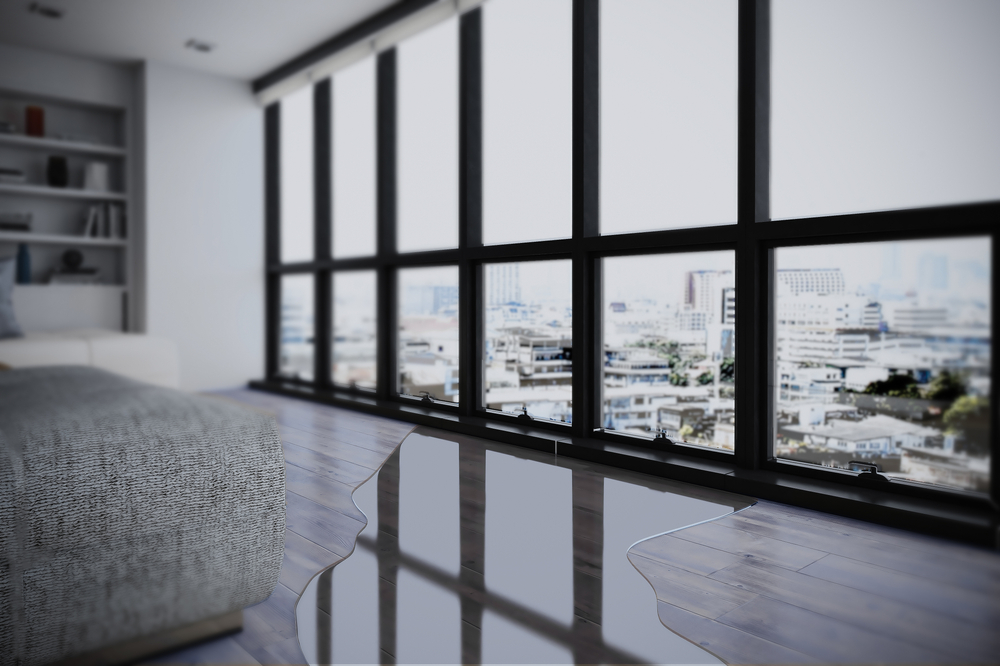
5. Contact your renter’s insurance provider
If you have renter’s insurance, file a claim as soon as possible. Renter’s insurance may cover:
- Damaged personal property
- Temporary housing costs if the apartment is uninhabitable
Provide your insurance company with the documentation you’ve gathered, such as photos, videos, and a list of damaged items. Ask your insurance provider whether temporary relocation costs (like a hotel stay) are covered. Some policies include this benefit if your apartment is deemed uninhabitable. Keep an inventory of belongings (with photos and receipts if possible) to make future claims faster and easier.
6. Remove standing water
Once it’s safe and approved by your landlord, begin removing water to minimize further damage:
- Use a wet/dry vacuum, mop, or buckets to remove standing water.
- Open windows and use fans or dehumidifiers to accelerate drying.
- Avoid using household vacuums or electrical appliances in wet areas.
- If water is pooling in multiple areas, start with the lowest point in the apartment to prevent further spreading.
7. Dry out the apartment
Drying out the apartment is crucial to prevent mold and mildew:
- Pull up wet carpets and rugs for drying or disposal.
- Use fans, dehumidifiers, and open windows to improve air circulation.
- Wipe down wet surfaces, including walls, floors, and furniture.
- Discard water-damaged items that cannot be salvaged, such as mattresses or particleboard furniture.
8. Sanitize affected areas
Floodwater can carry bacteria and contaminants, so it’s important to disinfect thoroughly:
- Disinfect hard surfaces: Use a bleach solution (1 cup of bleach to 1 gallon of water) to clean floors, walls, and countertops.
- Wear protective gear: Use gloves, waterproof boots, and protective clothing to prevent exposure.
- Deep clean soft surfaces: Wash washable fabrics in hot water with detergent.
- Discard unsalvageable items: Dispose of porous items like mattresses and rugs that have absorbed contaminated water.
- Clean hidden areas: Sanitize under appliances and in tight spaces where water may have seeped.
Quick action can prevent health risks and further damage. For extensive contamination, consider professional help.
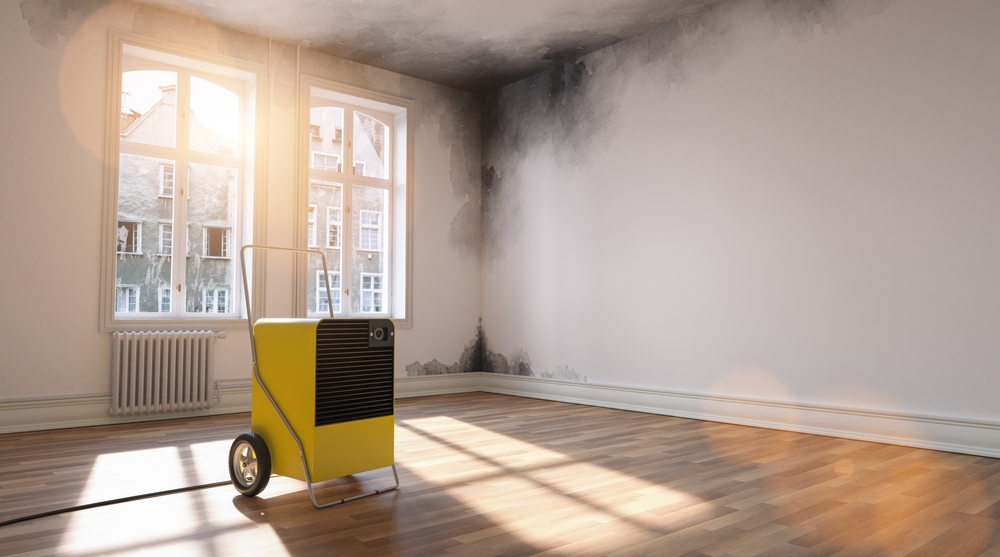
9. Monitor for mold
Mold can develop within 24-48 hours of flooding. Be vigilant for signs such as:
- A musty odor
- Discoloration on walls, ceilings, or floors
- Peeling paint or bubbling surfaces
If mold appears, clean small areas with a bleach solution (1 cup bleach to 1 gallon of water). For extensive growth or mold in porous materials, contact a professional remediation service. Regular inspections can help catch mold early.
For additional tips, check out Simple Ways to Get Rid of Mold in Your Apartment for easy and effective solutions.
10. Follow up with your landlord
After the immediate cleanup, keep in touch with your landlord to:
- Confirm repairs to plumbing, walls, or other structural issues
- Address any lingering concerns about the apartment’s habitability
- Request updates on the timeline for repairs if the flooding required you to relocate temporarily
Learn more in How to Clean Your Apartment After Flooding, a complete guide to restoring your space.
11. Plan for future prevention
While some floods are unavoidable, you can take steps to reduce the risk of future flooding:
- Keep gutters and drains clear: Ensure that outdoor drains and gutters near the property are not clogged.
- Know your water shut-off points: Familiarize yourself with the location of your apartment’s water valves.
- Elevate valuable items: Store important documents and electronics off the floor.
- Consider flood insurance: If you live in a flood-prone area, add flood insurance to your renter’s policy for additional protection.
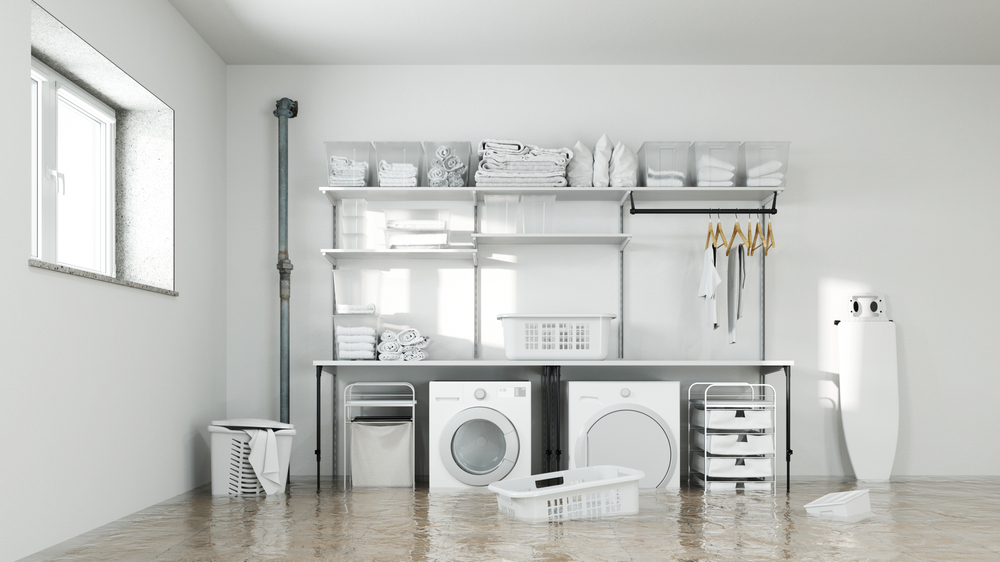
Flooded apartment frequently asked questions
Q: What should I do if my apartment floods while I’m not home?
A: As soon as you discover the flooding, follow the steps outlined above, including documenting the damage, notifying your landlord, and contacting your renter’s insurance provider. The sooner you act, the better you can mitigate the damage.
Q: My upstairs neighbor flooded my apartment. What should I do?
A: Start by documenting the damage with photos and videos, especially areas where water is leaking. Notify your landlord immediately so they can address the issue and coordinate repairs. Protect your belongings by moving items out of the affected area, and contact your renter’s insurance to file a claim for damaged personal property. Politely inform your neighbor about the situation, as they may need to address the source of the flooding.
Q: What are some storm preparation essentials for renters?
A: Stay informed by bookmarking your power company’s outage pages and subscribing to emergency alerts. Prepare an emergency kit with essentials like water, non-perishable food, a first-aid kit, flashlights, batteries, and medications. Photograph valuables for insurance purposes and store the images securely online. Identify nearby evacuation routes and centers, and always follow evacuation orders promptly. For pet owners, prepare a pet emergency bag and find pet-friendly shelters in advance.
Q: How long does it take for an apartment to dry out after flooding?
A: The drying process can take several days to weeks, depending on the extent of the flooding and the drying methods used. Using dehumidifiers, fans, and professional restoration services can expedite the process.
Q: Can I withhold rent if my apartment floods?
A: Laws regarding rent withholding vary by state. If the apartment becomes uninhabitable due to flooding, you may have the right to withhold rent or terminate your lease. Consult local tenant laws or seek legal advice.
Q: Is it safe to stay in an apartment after a flood?
A: If the flooding was minor and you’ve ensured there is no electrical hazard or mold, it may be safe to stay. For significant flooding, especially if there is extensive damage or contamination, you may need to temporarily relocate.

